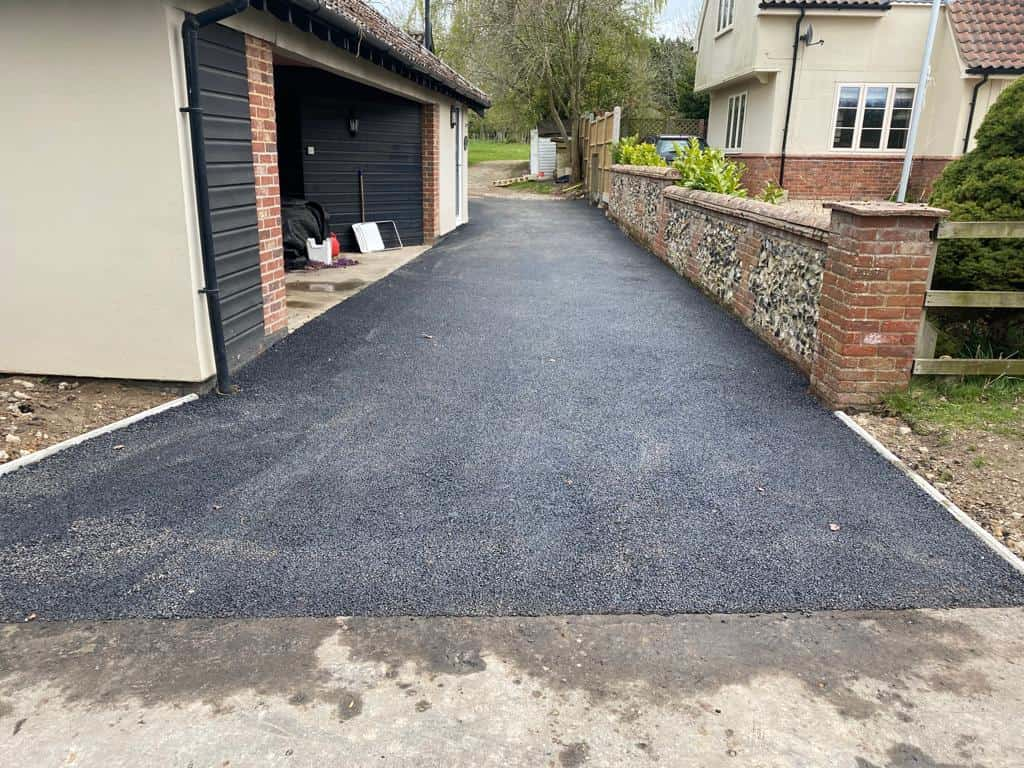What to Consider When Replacing Your Old Driveway
Replacing an old driveway is a significant investment that can enhance your home’s curb appeal, functionality, and overall value. However, it’s not a decision to take lightly; several factors must be considered to ensure you choose the right materials and design for your property. At Olney Driveways & Patios, we specialise in helping homeowners in Olney, Buckinghamshire, navigate the driveway replacement process. In this blog, we’ll outline key considerations to keep in mind when replacing your old driveway.
1. Material Options
The choice of material for your new driveway is one of the most critical decisions you’ll make. Each material comes with its own set of advantages and disadvantages, so it’s essential to consider the following options:
- Block Paving: Known for its durability and aesthetic appeal, block paving allows for a variety of designs and colours. It can withstand heavy traffic and is easy to repair, making it a popular choice among homeowners.
- Resin Bound: This option offers a smooth finish and is highly permeable, allowing water to drain effectively. It’s ideal for those looking for a modern and stylish appearance while also being eco-friendly.
- Tarmac: A cost-effective solution, tarmac is quick to install and can last for many years. However, it may require more maintenance to keep it looking its best.
- Concrete: This durable material can be stamped or coloured to create a unique look. It’s a great choice for those seeking a long-lasting surface.
Consider your budget, aesthetic preferences, and the level of maintenance you’re willing to commit to when selecting a material.
2. Design and Aesthetics
The design of your driveway should complement the style of your home and landscape. Consider the following design aspects:
- Size and Shape: Ensure that the driveway is appropriately sized for your vehicle(s) and any additional features, such as pathways or parking areas. The shape should flow well with your property layout.
- Pattern and Colour: Different materials offer various design possibilities. Think about how the colour and pattern will blend with your home’s exterior and surrounding landscaping.
- Landscaping Integration: Consider how the new driveway will work with existing garden features, such as flower beds, trees, or fences. A well-integrated design will enhance your overall outdoor space.
3. Drainage Solutions
Proper drainage is crucial to prevent water pooling and damage to your driveway and surrounding areas. Ineffective drainage can lead to erosion, cracks, and even flooding in your garden. When replacing your driveway, think about:
- Slope and Grading: Your driveway should be graded to direct water away from your home and towards appropriate drainage areas.
- Permeable Materials: Choosing permeable paving options allows water to flow through the surface, reducing runoff and promoting groundwater recharge.
4. Local Regulations and Permits
Before starting your driveway replacement project, it’s essential to check with local authorities regarding any regulations or permits required. In some cases, planning permission may be necessary, especially if you are making significant changes to your driveway’s size or layout. Familiarising yourself with local regulations can help avoid potential fines or issues down the line.
5. Cost and Budgeting
Understanding your budget is vital when planning a driveway replacement. Costs can vary significantly based on the materials chosen, the size of the driveway, and the complexity of the installation. Be sure to account for:
- Material Costs: Research the price of different materials and their installation costs. Consider both upfront costs and long-term maintenance expenses.
- Installation Fees: Professional installation is recommended for most driveway types, as this ensures quality and longevity. Obtain quotes from reputable contractors to understand your total investment.
- Additional Features: If you’re considering adding features such as lighting, borders, or drainage systems, factor these into your budget.
6. Hiring a Professional Contractor
Once you’ve assessed your needs and preferences, the next step is to hire a professional contractor. Look for a company with a solid reputation, experience in driveway installation, and positive customer reviews. A professional contractor will ensure that your driveway is installed correctly and efficiently, giving you peace of mind and a durable final product.
Conclusion
Replacing your old driveway is an exciting opportunity to enhance your home’s aesthetic appeal and functionality. By carefully considering the materials, design, drainage solutions, regulations, and budget, you can make informed decisions that will lead to a successful driveway installation. At Olney Driveways & Patios, we are committed to providing high-quality driveway solutions tailored to your specific needs.
Call us on: 01234 676 689
Click here to find out more about Olney Driveways & Patios
Click here to complete our contact form and see how we can help with your Driveway needs.

